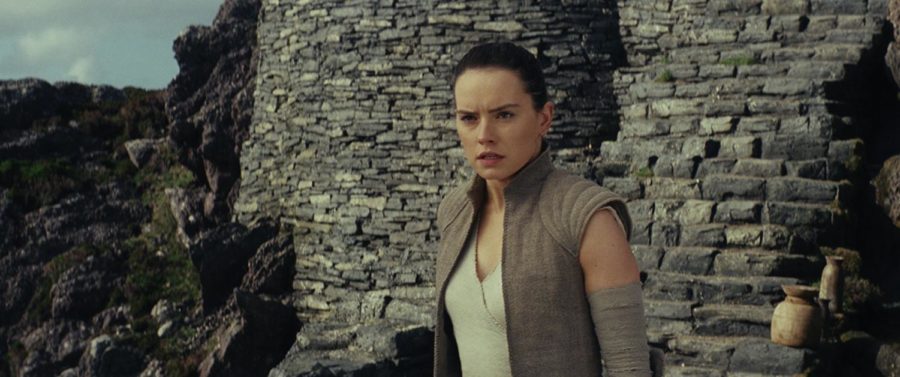Adolescence and Feminism in Star Wars: The Last Jedi
Rian Johnson’s new film expands the scope, raises the stakes, and transforms the meaning of George Lucas’s beloved franchise with varying levels of success
January 7, 2018
If The Force Awakens was designed to bring a new generation of children into Star Wars, The Last Jedi was definitely designed to do the same for teenagers.
Why is this the case? The Last Jedi wrestles with many issues normally dealt with during adolescence, such as finding oneself and one’s place in the world, rebelling against adult authority, struggling to overcome the effects of childhood abuse, realizing life’s complexity, failing to achieve one’s goals, and discovering one’s sexuality. It’s part of what makes The Last Jedi new, fresh, and interesting. As a teenage watcher myself, I was able to really relate to the characters who wrestled with these challenges.
Rey (Daisy Ridley), for instance, spends less time receiving training from defunct Jedi Master Luke Skywalker and more time searching for her identity. She resists Luke’s teachings and advice rather than following them. Meanwhile, Ben Solo/Kylo Ren (Adam Driver) is still haunted by his boyhood mistreatment, but his moral grayness shows Rey that good and bad is not as clear-cut as light and dark (an interesting contrast to the other Star Wars films). This theme of moral ambiguity is also accompanied by the theme of failure: The Last Jedi’s conclusion is painful due to the unsuccess of most of the characters in their respective missions (but then, The Empire Strikes Back’s ending was similar). The best, most subtle, and boldest move the movie makes, however, is the inclusion of a couple brilliant scenes which strongly suggest the sexual awakening of two characters (no spoilers).
Another impressive aspect of The Last Jedi is how effectively it manages its large and diverse cast of characters. The strength of its females is especially what sets this movie apart from other science fiction and fantasy films. The best performances were from Vice Admiral Holdo (Laura Dern), a Resistance leader, and Paige Tico (Veronica Ngo), a bomber pilot — two women who sacrificed themselves for the Resistance. Other strong performances included Carrie Fisher’s startling and heartbreaking last portrayal as General Leia and Kelly Marie Tran’s Rose Tico, the sweet, determined, and Resistance-loyal companion whom Finn (John Boyega) needed. Other smaller female roles abounded, including Captain Phasma (Gwendoline Christie), Maz Kanata (Lupita Nyong’o), Lieutenant Connix (Billie Lourd), and Commander D’acy (Amanda Lawrence).
The Last Jedi successfully includes classic Star Wars elements such as alien creatures, lightsaber fights, and revelations about the Force, but occasionally its attempts to deviate from the standard Star Wars formula fall flat. Most of these cringey moments are a result of superficial humor which only sporadically succeeds in adding a few laughs to an otherwise dark movie. Poe’s Marvel-style joke at General Hux’s expense in the movie’s beginning sequence felt out of place, and the penguin-like porgs, though adorable, never contributed to the plotline (in fact, they nearly felt like one of Lucas’s unwanted and unasked for CGI additions).
The Last Jedi takes so many risks that it’s hard to agree with every one of writer and director Rian Johnson’s controversial decisions. Since it’s the middle chapter of the sequel trilogy and therefore without a happy resolution, it’s also difficult to walk out of the theater satisfied. However, The Last Jedi is the kind of movie that takes multiple viewings to fully absorb and appreciate. It’s complex in its interwoven storylines, ambiguous in its themes, and surprising in the choices of its many characters. It defies the audience’s expectations, and that will always make it better than a franchise film which sticks to the status-quo.


